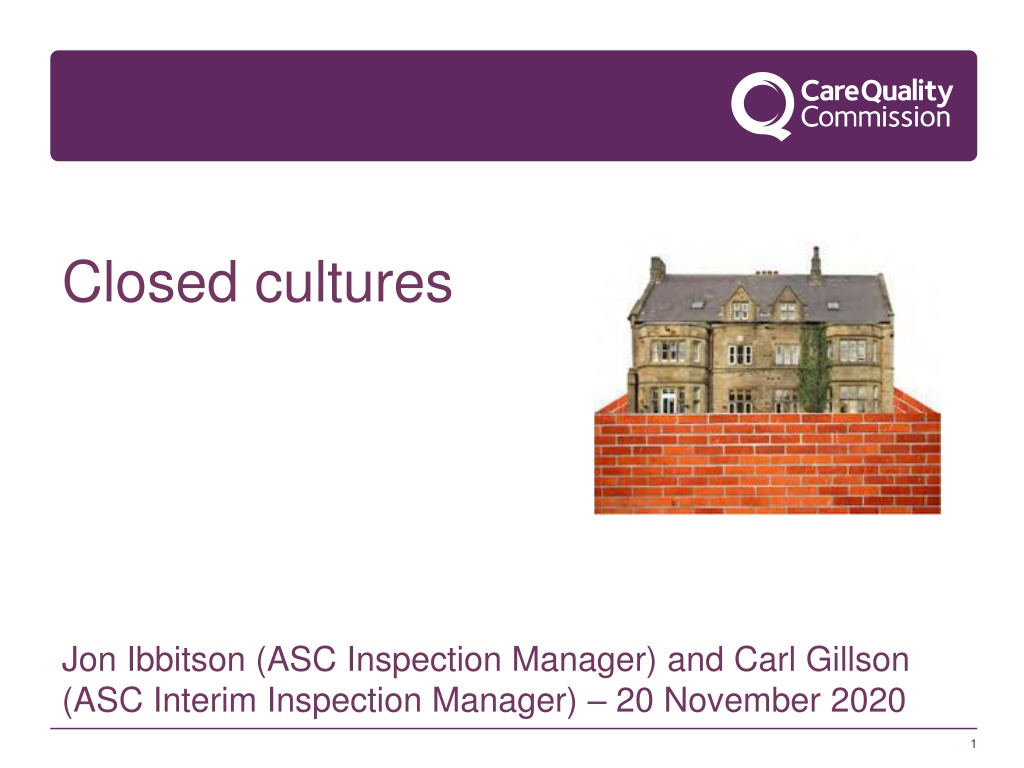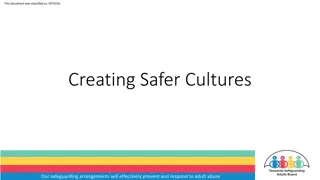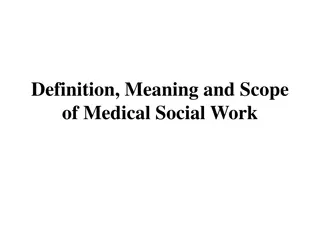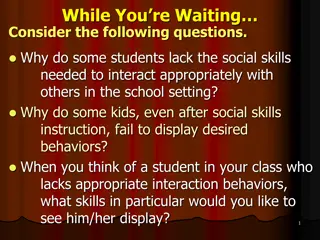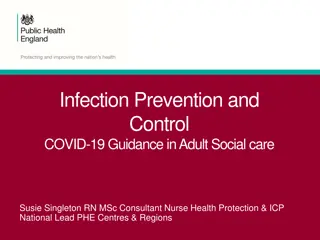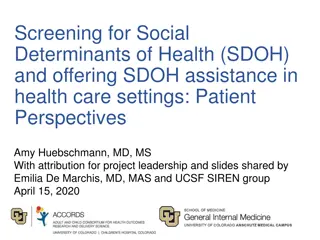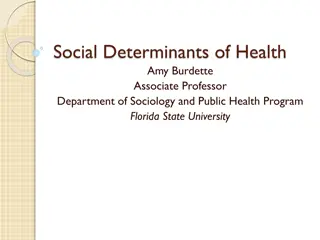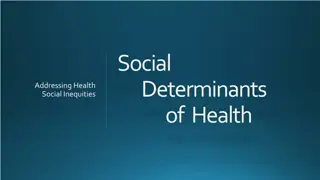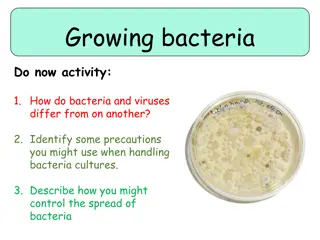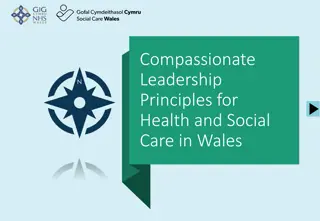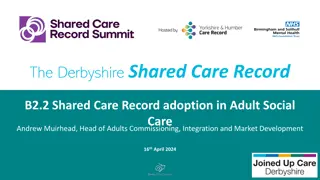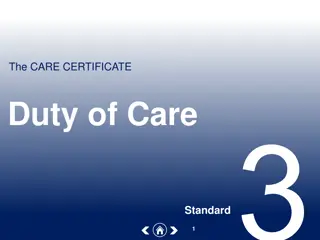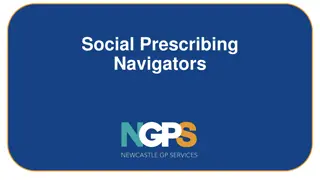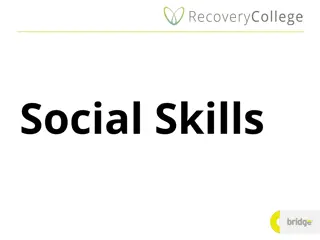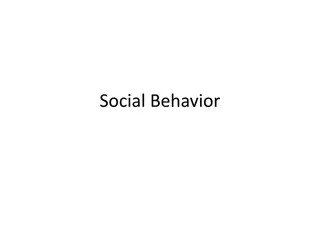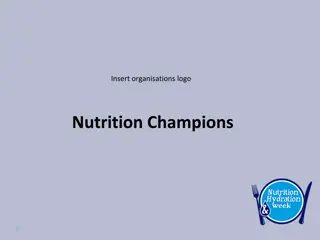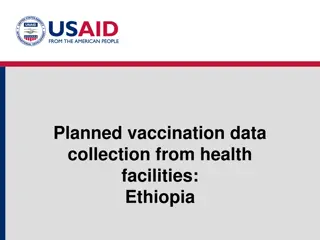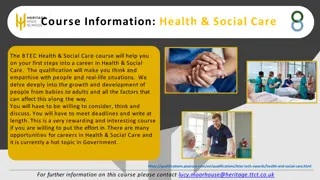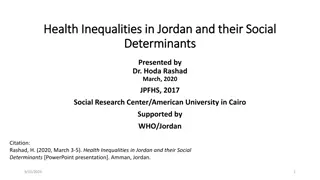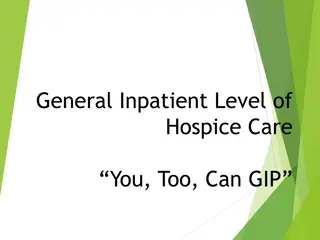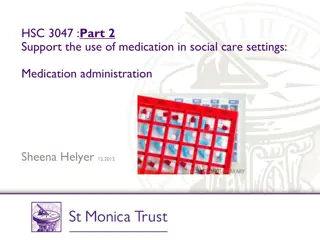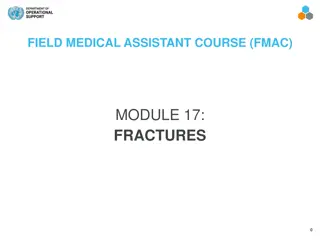Understanding Closed Cultures in Health and Social Care Settings
Explore the concept of closed cultures in health and social care settings, including the reasons behind their development, inherent risk factors, warning signs, and appropriate responses. Learn about the impact of the Covid-19 pandemic on closed cultures and the efforts of the Care Quality Commission (CQC) to address and prevent them through improved regulation and oversight.
Download Presentation

Please find below an Image/Link to download the presentation.
The content on the website is provided AS IS for your information and personal use only. It may not be sold, licensed, or shared on other websites without obtaining consent from the author. Download presentation by click this link. If you encounter any issues during the download, it is possible that the publisher has removed the file from their server.
E N D
Presentation Transcript
Closed cultures Jon Ibbitson (ASC Inspection Manager) and Carl Gillson (ASC Interim Inspection Manager) 20 November 2020 1
CQCs closed cultures work topics to be covered What led to CQC s closed cultures work? What is a closed culture? What are the inherent risk factors that mean a service is more likely to develop a closed culture? What are the warning signs that suggest a closed culture is developing or has already developed? What should the response be? 2
What led to CQCs work around closed cultures? Closed cultures page on CQC s website: https://www.cqc.org.uk/publications/themes-care/our-work-closed-cultures Background to closed cultures work: Whorlton Hall May 2019 Potential for closed cultures to develop in any health and social care setting Increased risk of harm to people, including abuse and human rights breaches 3
Impact of Covid-19 pandemic on potential for closed cultures At the moment there is the potential for closed cultures to develop in previously open services and for closed cultures to flourish where they already exist. Factors: Less external oversight Reduced employment checks Services under increased pressure 4
CQC want to: to improve our ability to hear from people our inspectors to be able to effectively identify and prioritise to continue to embed human rights into our work to improve our ability to collect and use intelligence Influence system partners 5
What have we done so far to improve regulation? 2 independent reviews Set up a dedicated team to implement these We re working with external stakeholders, including people who use services. We have released new guidance for inspectors We have trained approximately 2,000 inspectors on closed cultures throughout summer 2020. 6
What have we done so far to improve regulation? Right Support, Right Care, Right Culture Out of sight who cares? our review of restraint, seclusion and segregation 7
Closed cultures: Whats next? This is ongoing work. Closed cultures is shaping CQC s next strategy and informing how we work as a regulator There are a series of other tools and resources being developed. 8
What is a closed culture? A poor culture in a health or care service that increases the risk of harm. This includes abuse and human rights breaches. Features: People are at risk of deliberate or unintentional harm Staff stop seeing or have never seen the true situation the person is in People are unable or afraid to speak up for themselves and are not listened to if they do People are likely to be highly dependent on staff There may be breaches of human rights and equality law 9
Amandas story When I was a patient in a closed culture on a psychiatric ward, I felt completely vulnerable. The staff had all the power and I felt that whatever I did or said I was completely powerless. Some of the senior staff were so arrogant that they controlled everything. I could tell that some of the more junior staff disagreed with what was happening, but even they didn t feel able to speak up for the patients rights (and presumably for their own working environment too). Even when I did try to say that things weren t safe, I was ignored. It felt like all my experiences, past education, training and work counted for nothing because I was the one who was mentally ill and they were the professionals . I may have been unwell, but I still knew that what was happening was wrong and was rejected when I tried to articulate this to the powers in the organisation. This happened to me as someone who is articulate and confident to speak up. We now need to stand up for those people who are in similar situations but are unable to make their voices heard. 10
Inherent risk factors associated with a closed culture Poor Poor skills, experience and training of staff providing care Lack of external oversight Weak experience of people receiving care leadership or management 11
People may be experiencing poor care People are highly dependent on staff for their basic needs. People are less able to speak up for themselves without good support from the service, for example, in learning disability or children s services or care homes for people with dementia. Restrictive practices are used. In healthcare, people stay in a service for months or years. 12
Weak leadership and management There are regular changes in management or managers are not regularly present and at times the service may run without a manager. This may be more likely during COVID-19 due to staff being off sick or self-isolating. The workforce comprises many members of staff who are either related or friends, causing cliques to form. Managers do not lead by example. Staff are not supported or encouraged to raise concerns. Managers fail to monitor, and address issues raised by staff, people using the service, relatives and visitors to the service. Managers fail to respond to recommendations of others, for example professionals, commissioners and regulators. 13
Poor skills, experience and training of staff providing care There is a high turnover of staff. There are consistent staff shortages. There is a high use of agency staff who do not know the people they are caring for (in mental health hospitals or residential care) There is a lack of suitable induction, training, monitoring and supervision of staff. During COVID-19, employment checks are not as thorough (giving job applicants who could harm people who use services greater opportunities to be employed). Shift patterns within the service mean that the same people are always working together, and staff are not mixing with other colleagues. Staff work excessively long hours or overtime. 14
Lack of external oversight The service is in an isolated location resulting in people using the service having limited access to community services and facilities and less opportunities for friends and family to visit. There is a lack of monitoring by outside agencies. There is limited interaction with outside agencies due to failings on the part of the service to submit mandatory information such as notifications or safeguarding referrals. There are few visitors. During COVID-19 there are restrictions on access to, and less external oversight of all services by family, friends, social workers, visiting health care professionals, commissioners and CQC. 15
Warning signs of closed culture Leadership and management.. Do senior staff know what is happening? Are senior staff present in the service? Are concerns recognised and acted upon, or are they played down/ignored? 16
Warning signs of closed culture People s experiences.. High proportion of people isolated from others using the service Are people comfortable with staff? How do people behave towards each other? How do staff behave towards people using the service? 17
Warning signs of closed culture Staff skills and experiences.. Do staff know people s needs, wishes, history? How do staff talk about people? Are staff attending to people s basic needs/helping people to do so themselves? 18
Warning signs of closed culture Use of restrictions.. Are there imposed restrictions in place? Are these reviewed to ensure they are least restrictive option? Are restrictions proportionate to risk or are they blanket ? 19
Warning signs of closed culture Use of restraint.. Is there high or increasing use of restraint, seclusion or segregation? 20
Warning signs of closed culture Physical environment.. Is the environment well maintained? Would you be prepared to live there? Have people been encouraged to personalise their rooms? 21
Warning signs of closed culture External oversight.. Is there a high or increasing number of safeguarding incidents, complaints or other notifications? Especially concerning if they involve: any form of inappropriate behaviour by staff towards people using the service. injuries to people that cannot be fully explained, even when safeguarding investigations do not find any abuse. an increase in incidents where people using the service are violent towards staff. complaints by people using the service, their family and friends, including those that are withdrawn subsequently. complaints that family members, or others such as advocates, are being prevented from visiting or receive a hostile response from the service. complaints that family members or visiting professionals are not enabled to see someone in private 22
Responding to closed culture The presence of one or more inherent risk factors is not proof that there is an abusive or punitive culture, but could be a sign that there is an increased chance of one developing. Key considerations are: Can people self advocate? Is there a high inherent risk? Are there any warning signs? If you are concerned, take action and report those concerns. Please also share them with CQC. Closed cultures cannot be tackled unless concerns are shared and acted upon. 23
Supporting you to support others Who can I contact? enquiries@cqc.org.uk Alternatively, please contact our NCSC call centre on: 03000 616161 24
Staying up to date Receive our Provider Bulletin Sign up here: https://www.cqc.org.uk/news/newsletters-alerts/email-newsletters-cqc Follow our CQC Twitter account For the most up to date, immediate information Follow: @CQCProf Get involved on our digital platform Feedback surveys available on themes and the strategy Sign up here: https://cqc.citizenlab.co/en-GB/ Listen to our Podcasts Wherever you usually listen to Podcasts ie. Spotify Search for: CQC Connect Read our Blogs Keep up to date on our latest thinking. Look for: https://medium.com/@CareQualityComm 25
Thank you and questions? www.cqc.org.uk enquiries@cqc.org.uk Jon Ibbitson and Carl Gilson Inspection Managers 26 26
